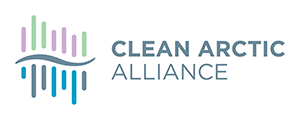The Clean Arctic Alliance: Our Work
Made up of 21 not-for-profit organisations, the Clean Arctic Alliance campaigns to persuade governments to take action to protect the Arctic, its wildlife and its people.
The Arctic is changing rapidly – and what happens in the Arctic doesn’t stay in the Arctic – the impacts of climate change are global. Arctic sea ice, glaciers, permafrost and the Greenland ice sheet are all decreasing rapidly, with expected global impacts such as sea-level rise and an increase in extreme weather patterns. Arctic sea ice is currently disappearing much faster than climate models predicted with impacts across the Arctic and the globe.
In September 2020, the Arctic summer sea ice minimum reached its second lowest extent since records began over 40 years earlier. As the summer sea ice recedes, Arctic waters are becoming increasingly navigable to shipping. In 2020, the Northern Sea Route along Russia’s Arctic coast was open for navigation in July for the first time, and in October 2021, Russia’s Deputy Prime Minister indicated that year round operation in the Arctic could commence as soon as 2022 or 2023. Arctic shipping is increasing as reduced sea ice opens up access to Arctic resources, while interest in shorter shipping routes through the Arctic is growing.
Emissions of carbon dioxide (CO2) and black carbon (BC) from oil-based fuels used by ships including heavy fuel oils (HFOs) – one of the world’s dirtiest fuels – enter the atmosphere causing warming. Despite regional and global efforts, ships’ CO2 and BC emissions continue to rise – with BC emissions from shipping in the Arctic increasing 85% between 2015 and 2019.
When black carbon settles onto snow and ice, it accelerates melting, and the ensuing loss of reflectivity creates a feedback loop with more heat being absorbed, speeding up melting further and exacerbating global heating. Black carbon emissions also have health impacts for local communities, while a spill of HFO, discharges from scrubbers used to circumvent the need to use fuels with reduced sulphur content, and discharges of wastewater would have devastating consequences for the sensitive Arctic ecosystem, wildlife and its residents, including the food security of indigenous communities.
The Clean Arctic Alliance’s vision is protection of the unique Arctic ecosystem, including summer sea ice, dependent wildlife and Indigenous communities, from the polluting impact of shipping both in the region and beyond. This will be achieved through international campaigns focused on advocacy with decision-makers, collaboration with local communities, engagement with the shipping industry and communication across a variety of platforms focused in Arctic and Arctic-observer countries, as well as countries which flag ships choosing to use Arctic routes.

